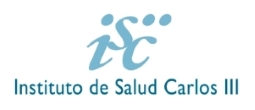Cód. SSPA: IBiS-B-12
Dr. Echevarría has identified several Aquaporins (AQPs) and described the participation of AQPs in the permeation of water in different organisms and tissues. Her work has helped to understand the participation of AQPs in non-canonical functions associated with cell cycle and cell proliferation leading to the sustainment of a function of AQPs in tumor growth; and has shown molecular mechanisms that regulate AQPs expression by hypoxia and profibrosis agents. Today, her research is focused on understanding the role that AQPs play in cerebrospinal fluid homeostasis and how alterations in the functioning and/or expression of these proteins in the brain could contribute to pathological situations such as brain edema and hydrocephalus, and in the neuroinflammatory and autoimmune disease Neuromyelitis optica, NMO. For that, different lines of mice (wild type or AQPs-KO animals) are used as experimental models to mimic pathological conditions. Furthermore, human CSF and blood samples from patients with real pathology (Hydrocephalus (iNPH), Alzheimer, multiple sclerosis, and NMO, among others) are analyzed to find new biomarkers of these diseases and to find genetic associations among these pathologies and point mutations in brain AQP (AQP1 and AQP4), or some other proteins related to neuropathology such as MOG.
Active lines
Three different lines of research are being pursued in the laboratory at the moment.
1. Aged animals exposed to hypoxia are used to induce ventriculomegaly and reproduce a series of symptoms that recall iNPH, which can allow further understanding of contribution of AQPs in such disease. CSF samples for iNPH patiens are also being analyzed.
2. AQP4-KO animals that present congenital hydrocephalus condition with a range of severity grades that can go from obstructive hydrocephalus to a mild communicating hydrocephalus condition are being used to explore the genetic bases that link AQP4 to the pathological state of these animals.
3. Microarray analysis of mRNAs obtained from patients with NMO, multiple sclerosis and controls will be performed and analyzed to find alteration of genes that may correlate with the pathology of NMO.















